La vie en rose: Why I am just a girl asking for the cider menu. Et non, je ne regrette rien
Alcopop noun al· co· pop | \ ˈal-kə-ˌpäp :a flavoured beverage containing usually 4 to 6 percent alcohol[i]
Cider noun ci· der | \ ˈsī-dər : fermented apple juice often made sparkling by carbonation or fermentation in a sealed container[ii]
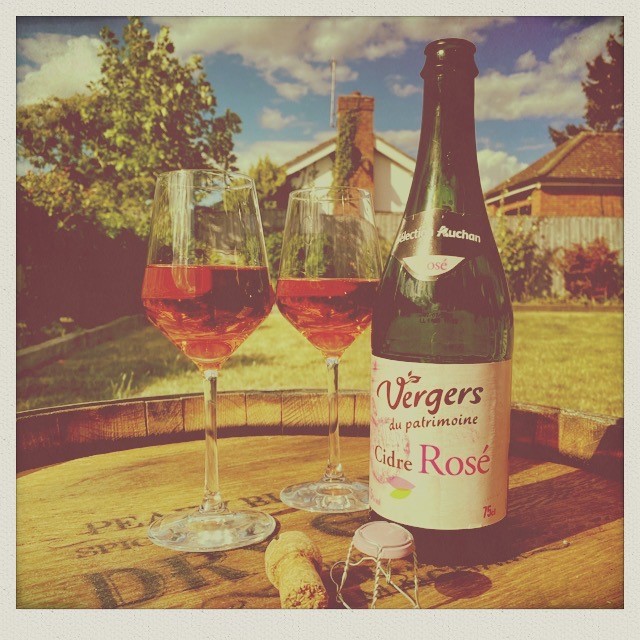
[TL; DR] Ask for the cider menu, regret nothing and “feel the glamour in pink”[iii]
A few weeks ago, something incredible happened: To set the scene, it began, as every apparent story does, with … “It was a dark and stormy night.” …
Only joking, it didn’t and it wasn’t – it was a Friday, early evening and the husband and I were in the garden waiting for the BBQ to do its thang whilst enjoying the last bit of sunshine before the sun inescapable made its way behind next door’s roof.
I like to think our conversation started a bit like this, as it always does when he is thinking about and drinking wine:
Husband: “I fancy some wine. Would you like some?”
Me: “No, thank you.”
Husband: “You sure? Wanna try at least?”
Me: “No, thank you.”
Husband: “Sure??”
Me: “You know what, why not.”
And so, I grabbed his glass, sniffed the ruby liquid, pondered, sniffed again and proclaimed surprised: “Oaky! Vanilla and full of cherries – this smells divine!”
If you have met me, you will know that I do not care much for wine, whether red, white or rosé … I love grapes, but don’t really drink their fermented outcomes. Never have, really. I like beer, and I like cider.
And expectantly, and yet curiously so, I felt almost a bit dirty – me and wine? It was like I was cheating on beer and cider, and I imagined both looking at me in disgust, mumbling something along the lines of “Too posh for us now, are you? Are we too peasanty for you now?”
But on that faithful day, I sniffed and tasted the wine offered to me and actually enjoyed it. #micdrop
…
To my husband’s surprise, I might add! He has only been asking me to try wine for the past 15 to 20 years…. I was even handed my own glass and we shared a bottle of wine, almost assuming that by morning he would have vanished into thin air as he had finally completed his mission and taught me “everything a grown up should eat and drink” (his words, not mine) including olives, garlic and red wine, to name a few.
But, alas, he did not disappear, and I don’t feel much more grown up since then either.
“You’ve come a long way since your Watermelon Bacardi Breezer” he announced.
And I swear, I could almost hear some form of fear or adoration in his words… although probably both to be perfectly honest. “What have I done…?” echoing in his mind…
Once my go-to drink when I visited this fair kingdom, my Millennial heart ached a bit when I thought about those bright pink bottles no longer easily commercially available.
They were indeed the thing I wanted… the only thing! My precious! … Shiny illuminescent bottles of pink! … even though I grew up with ample examples of great beer and cider surrounding me, my heart ached for those bright Alcopops!
German cider? Pah, not for me!
Beer brewed according to the Reinheitsgebot, therefore so pure you had to look up hangover in the dictionary, to know what it was? Not for me thank you!
Give me those bottles filled with sugar and enough E numbers so I can abruptly crash after too much and cry myself to sleep… yeah… that’s what I need to consume…
I wanted fluorescent pink sugar liquid with an ABV of roughly 4% – low enough to convince myself that I wasn’t drinking to get drunk. Although in hindsight, why in the name of all that is holy, would one want to drink this sugar-loaded, artificially tasting abomination other than to rapidly forget one had just consumed roughly 18g of the white stuff in one small pink bottle …?
I mean, we’re not even talking about millennial pink, that soft muted shade that recalls childhood nostalgia, innocence, that soothes and comforts. We are talking energy, vibrancy and loud electric statements , completed with joyous noise.
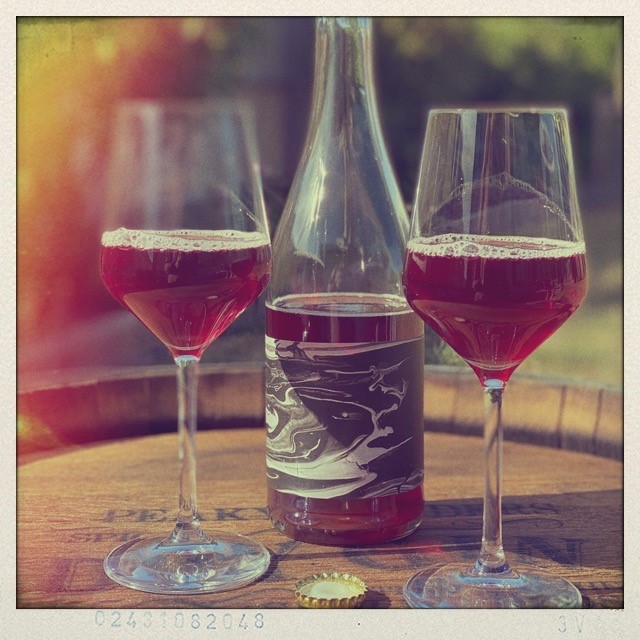
Well, I guess the man is right (don’t tell him I said that – I’ve got appearances to keep up). I have come a long way since then. When I choose to drink now, I’m after flavours, aromas, tradition, heritage, craftsmanship and artistry – I no longer drink to get drunk, although I never really enjoyed the buzz alcohol gives you anyway. I was and am far more interested in the liquid itself, why it is what it is. Who the brewer or maker behind it is – the stories that shape the drink. Granted, this sounds rather annoyingly drinks-posh and a bit airy-fairy, but I just concluded that life is too short to drink bad cider and beer, and I am living my truth.
I’m not really too sure when I packed my pink Alcopops dreams / nightmares away, but I did. Considering that I actually cannot recall when I knowingly had my last Watermelon Breezer, I’m wondering what the attraction of them was in the first place…. The rum? The sugar? The artificial taste? The colour?
And while I honestly cannot fathom the magnetic pull I was experiencing; the allure of pink liquids has stayed with me – go sue me. I do like pink. So maybe it was the colour after all.
Life choice questions aside, what better way than to indulge my pink stained heart, than by sipping on some of the most exciting pink ciders I could source:
♦ 24 Moons (5.5%), Pilton – Barrel Aged blackcurrant with keeved cider
♦ In Touch 3 2021 (5.5%), Pilton – Medium Sweet Cider
♦ Three Cherries (5%), Pilton – Sparkling Medium Sweet Cider & Black Cherry Co-Ferment
♦ Three Cherries (6.5%), Once Upon a Tree – Co-fermented Cherry Cider
♦ Three Cherries (6%), Little Pomona – Pet Nat Perry Cherry Hybrid
♦ Hard Rain – Hot Pink 2020, Little Pomona – Ciderkin
♦ Hard Rain – Hot Pink 2021, Little Pomona – Ciderkin
♦ Cidre Rubis (6%), Loïc Raison – Rosé Cidre
♦ Cidre Rosé (3%), Cidres Écusson – Rosé Cidre
♦ Le Délicieux (3%), Cidres Écusson – Rosé Cidre
♦ La Sulfureuse. Cidre Rosé (3% ABV), Sassy – Rosé Cidre
♦ Cidre Rosé (2.5%), Vergers Du Patrimoine – Rosé Cidre
♦ Raspberry & Blackcurrant (4%), Harry’s Cider – Still Cider
I won’t bore you with tasting notes for all the ciders, you can read those on my socials if you wish, but I will share a few thoughts later on. Nevertheless remember, your perception of a cider is unique to you, so don’t take my word for it – try them yourself (they are exceptional!)
Attentive readers may notice that all ciders are full juice ciders and ciderkins. Yes, I could have included more commercial or mainstream-oriented ciders here (let’s call them Big Cider), and I may well add some to the list, but the main reason behind the choice above is, that I tasted three of them at the Cider Salon in Bristol last month, and I have been dying to experience them again, and the rest, well, they are pink.
One of the many questions, which occupies my mind (other than what I should have for lunch), is whether I am actually drawn to the ciders because of their beautiful colours, or if the colour of the liquid and my resulting engagement are not connected at all.
Colour matters, we could agree on that one. Well, maybe matters is the wrong word, maybe engages is better suited. Colour engages. Let’s try that. Think of high-vis jackets worn by cyclists, runners and construction workers for example. Or, how about those proud mallards and peacocks showing off to the ladies?
Think of the colours peasants and poorer folk in rural locations have worn throughout history: earthy tones, browns, green, maybe some washed out reddish or orange tinges, whilst the rich and noble would wear colourful gowns, saturated hues, like scarlet and purple. The Nazis used colour and symbols as a quick way of showing what crimes prisoners were held for. We are surrounded by colour and often associated certain colours with certain emotions and feelings. Expressions like Feeling blue, green with envy or seeing red spring to mind.
Colour is, and was used, whether by choice or situation as an indicator of social class – a language without words, that told others who someone was. It is and was used as a signal, warning and for information. A quick and sure way of telling us: Those bananas are ripe – eat them now! And Don’t lick me, I am a poisonous frog! Not that I am in the business of licking frogs mind you.
Anyway, colour engages not only potential mates, it alerts, it informs us, warns us, invites us, hides us, helps us find our way.
Colourful cherries, berries and other fruits hang in stark contrast to the greens and browns of the plants and trees they have grown from. They become visual beacons of colour.
Nesting birds typically display rather mottled brown hues, so they can blend into their environment. Equally, soldiers wear camouflage in hopes to become visually part of their surroundings. Or think of the stereotypical cat-burglar all dressed in black to blend into darkness of the night. If said burglar would dress in reflective Day-Glo dungarees we’d spot them a mile away in a Punch-and-Judy-cum-Pantomime –“Behind you!”-kinda way.
Therefore, following this simple exercise, I conclude that the colour matters both to the world and me and I like pink, as a life style choice and in cider, obviously.
The question now is, does my husband?
And so, once again, I drag him into sipping on some cider with me. Granted, I don’t have to ask twice, but it always seems like I’ve asked him to consider if he wanted to sell his kidney for some locally grown and rather rare mushrooms in a post-apocalyptic barter situation. Maybe that’s just in my head … be that as it may, he obliges, and I get the glasses out.
“It was a dark and stormy night.” Oh ffs!
#fruitciderforgrownups
Guilty, I borrowed that #hashtag from Pilton[iv], but it sums up my quest so succinctly, that I will be using it for some time to come. Admittedly, the concept of grown-up conjures up a world very different to mine, but we will just run with it.
Looking at the Beer Judge Certification Program (BJCP) definition for fruit cider, I am delighted to find this gem[v]:
[…] Would this be different if neutral spirits replaced the cider? A fruit cider should not be like an alco-pop. […] The apple character must marry with the added fruit so that neither one dominates the other […] [vi]
Whether you prescribe to BJCP’s understanding or not, the question is valid: the underlying alcoholic base if you will, should be fit for purpose and cider should realistically taste like cider.
My pink Watermelon-Phantasy is described by Carrefour on their website as “[…] a ready to drink premixed drink containing a refreshing mix of Bacardi rum, watermelon fruit flavors sugar and sparkling water. It is delicious, vibrant and easy-tasting, a fun drink to have with friends. […]” [vii]
I agree, it certainly was a fun drink to have with friend. And yeah, it was refreshing. And yes, if this drink would have been made with cider as its base and provider for alcohol, and labelled and sold as a cider, we’d probably think twice about it: what does this have to do with cider?
And that would be kinda BJCP’s point, if they had a style guide for premixed alcoholic spirit-based drinks that is: it works well as it uses a spirit base which is fit for purpose; however, it would not be the case for a cider.
And, following this example through: a fruited cider should be still recognisable as a cider, whilst showcasing or highlighting both the apples and the added fruit.
The Beer and Cider Academy (BACA) cider style guideline informs us that flavoured cider, with the majority of those being fruit flavoured, are characterised by an acid and/or tannic base cider, and the addition of another ingredient other than apples or pears[viii].
While the American Cider Association (ACA) defines
“[…] Fruit Cider (or Perry) […] [as] a combination of any class of apples or pears and at least one other fruit in the form of whole fruit, juice, or fruit extracts or concentrates. […] [and] of any class of apples or pears and at least one other fruit in the form of whole fruit, juice, or fruit extracts or concentrates. […]”[ix]
It is therefore fair to say that the BJCP, BACA and ACA are all in agreement: a fruited/ flavoured cider should still be recognisable as a cider, read fermented apples, albeit with the further aromas and flavours of the added fruit.
Carrefour continues to list the ingredients of my pink rum dream/nightmare as follows:
Water ● Sugar ● Flavours ● Carbon Dioxide And Bacardi Rum. Additives: Acidity Regulators (E330 ● E331) ● Preservatives (E202 ● E212) ● Stabilizers (E414 ● E444 ● E445). Dyes (Caramel (E150D ● E102)[x]
Big Cider’s bestselling fruity number, on the coveted spot for the last two years running I might add[xi], list the following:
Water ● Apple juice (from concentrate) ● sugar ● blackcurrant juice (1%) ● colouring concentrate (black carrot) ● acid: malic acid, antioxidant: potassium metabisulphite ● natural flavouring ● natural blackcurrant flavouring[xii]
If you haven’t guessed it yet, we are talking about Strongbow’s Dark Fruit (4%) cider[xiii]. I have yet to try it but judging by my memories of their Original (4%)[xiv] cider in combination with those stats, I’m assuming some solid refreshment awaits me.
In comparison, my bottle of Little Pomona’s Hard Rain Hot Pink 2020 ciderkin contains the following:
100% Egremont Russet blended with live blackcurrant wine[xv]
I’m not telling you this to judge either one of them over the others in terms of quality, sustainability, profit or health benefits. That’s a drinker’s personal choice! I’m writing this down to compare the spirits-based premixed drink with the fruity ciders, i.e., to show that they are different kind of beasts. All have their place in society, at parties and in shops, and all of them are completely, utterly and understandably (I hope) different from each other.
And I no longer want to drink alcopops – at least for the foreseeable future.
Why? I hear you ask. And admittedly, a valid question perhaps. Do I no longer desire a fun drink to have with friends? Of course, I do. But my expectations of what constitutes a great drink and how I like to spend my time have shifted.
I want full juice ciders which burst with aromas and flavours, I want to taste the fruit, the terroir and the artistry behind the liquid. I want to be challenged by the liquid in the glass, as much as I want to be greeted with the familiar and expected. I want harvest driven drinks that are alive, aging and unique.
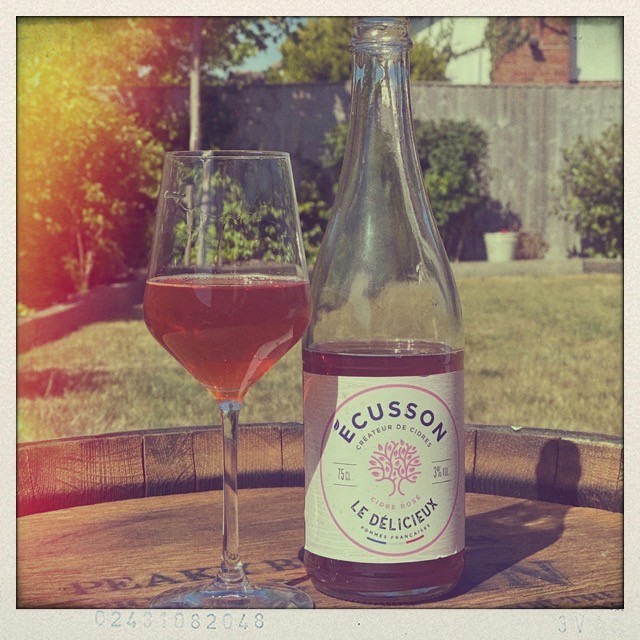
My journey in the beer world has somewhat informed this, as I’ve been commuting between the traditional styles and craft beers for a while now. Back and forth, like the tidal waters on the shoreline, I move from Milds and Bitters, to DDH TIPAs and BA Pastry Stouts, from crisp German Pils to beers so full of adjuncts the labels are printed as books and shipped separately. Never fully settling on “the one” I enjoy the variety on offer, but I know, that I am at home in the beer world. And this helps me clarify that I no longer feel at home in the vibrant Alcopops Reality.
And yet, depending on your personal views, this sugary noisy reality has already settled into the beer and cider sphere without us paying much attention to or complaining about. A new wave of Alcopops has quietly seeped into the everyday….
The UK’s first accredited Pommelier, Jane Peyton writes:
[…] Rather than the natural rural connection of the apple orchard and the farmhouse cidery where the cider takes months if not years to make, a big percentage of cider consumed in this country is an industrial product made in a factory in around 3 weeks with added sugar to make it drink like an alcopop. […][xvi]
Sounds a little familiar guv, don’t it?
A quick glance at the fridge of my local, I spot colourful bottles of Strawberry & Lime ciders, Watermelon & Citrus, Blood Orange, Mango & Raspberry ciders, mingling with Kiwi & Lime, Pineapple & Raspberry, Berries & Cherries and Strawberry ciders. I can also make out two apple ciders, but they may just be leftovers from previous times, or they are there by mistake. The one cider choice on draft is indeed apple cider, although one of Big Cider’s offerings, nonetheless it is an apple one.
I can get my paws on any one of them at any point in the year. They are not harvest-driven, or vintages[xvii] – they are commercially feasible ciders, which the customers know and can rely on. They are not aged in oak barrels, or wild, or co-fermented on fruit skins. They are not defined by the apples that were pressed for the juice. They are ciders which offer the same flavour and aromas experience in every bottle and can. They don’t age and change over time. They are reliable, viable and easy to go for, if faced with otherwise unknown drinks options in a foreign or unfamiliar place.
Some are advertised as being made “[…] with pure spring water […]” [xviii] and some list “[…] water, apple juice (from concentrate), sugar,… […]”[xix] as the first three ingredients.
And that’s the beauty of cider if you will – makers and drinkers alike can express themselves with whatever flavour, style, or colour they want to make and drink. Cider offers variety!
If you are into drinking grippy tannic numbers, you should certainly back away from the Kiwi & Lime bottles, and if you have more of a sweet tooth, a German Apfelwein or a Basque Sagardoa won’t win any points with you. If you want something tropical, light and spritzy with a moderate ABV, a Strawberry & Mango cider maybe the answer for you.
But then, tannin-driven ciders, Apfelwein and Sagardoa are not fruity or flavoured ciders. They are different and unique styles and can’t be compared to the fruity ciders we are talking about here.
You wouldn’t compare a Bohemian Pilsner to an Irish Dry Stout, would you? Or a Belgian Tripel to a Japanese Lager?
Frustratingly though, it seems to be generally accepted that the beer world is full of different styles and flavours, and libraries have been filled with notes on wine, its grapes, vintages and terroir; whilst all cider seems to be tarred with the same brush – for now at least.
“A dry wine? Red or white? We have a French Merlot, an Argentinian Malbec and a Spanish Tempranillo. We also have a South African Sauvignon Blanc, A Californian and French Chardonnay and an Argentinian Torrontés….”
“A dry beer? Are you thinking Australian? American? Japanese? Irish? IPA? Lager? Stout? Dry or Extra Dry? … ”
“A dry cider? Oh, I think the cider is sweet, but not sure… could be medium… it’s made from apples if that helps?
… sigh… And I am guilty of this too: I grew up with the tard taste of Apfelwein, and for years I opted for beers, thinking cider is cider, meaning I don’t dislike it, but I prefer beer, as if all cider is indeed the same…
What grapes are to wine, apples are to cider. Not liking Zinfandel doesn’t automatically mean you don’t like wine. It means you’re not to fussed on that grape. Therefore, dismissing cider because I was not too bothered about Kaiser Wilhelm, Bohnapfel and Boskoop varieties was stupid.
This needs to change! Cider is a huge and still largely misunderstood category of drinks, be it by consumers, publicans, bartenders. There is more to cider then sweet, medium or dry.
I want to see more variety in pubs, bars and shops. I want to be offered a cider list alongside the wine and beer menu. Why is it that you can have a fine wine on a Thursday evening and drink some plonk on Saturday and no one really thinks twice about it. But asking for a cider in a fancy restaurant will most likely result in either a straight “I beg your pardon?” or you will find yourself staring at a pint of Big Cider’s finest.
Why can’t I have both? The pint of scrumpy after work and the floral delicate perry in the Champagne flute???
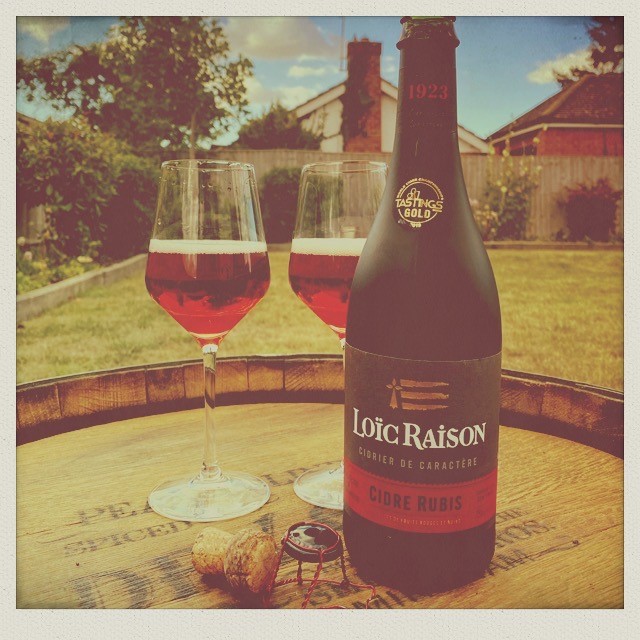
Yes, we need fruity ciders, but we also need tannic ones, we need co-ferments, we need ciderkins. We need dry ciders, and sweet ciders, and maybe ciders full of adjuncts, who knows! We need the variety cider is offering to us! So go and support your favourite maker by buying s bottle or two! Cider is inclusive and open, let’s make sure this is being acknowledged more often.
One of those rather special drinks is the third instalment of Pilton’s In Touch series: the aptly named In Touch (2021). As mentioned, I was lucky enough to try this in Bristol at the Salon, but holy smokes, this is fine!
In Touch (2021)[xx] is a naturally sweet cider – the glorious result of co-fermentation with Regent grape skins, refermentation, maturation and exceptional blending with fresh keeved cider. And due to its moderate ABV of 5.5% also session-able enough to be enjoyed fully.
Pouring a clear glowing red, with purple hues, the gentle carbonation creates a soft pink head – this cider means business!
On the nose it is wild and Bretty[xxi], drippin’ with red fruit aromas à la cherries, berries and grapes, hiding the ghosts of barnyard funk, while presenting itself delicately and soft.
Gentle fruity sweetness, zippy notes and complex apple and grape tannins in the mouth. Generous textures underline the cooked apple and caramel sauce notes, supported by a velvety dry and astringent finish. Lingering grape notes almost hold you hostage but turn into an interplay of sweet – dry – sweet.
Overall, In touch (2021) is surprising and reliable, fresh and funky, calm and wild, loud and inviting, apples and grapes, residual sweetness and possessive tannins.
The husband’s view? “This is a good one – very clever!” Phew, I’m feeling slightly less annoying for making him drink cider with me yet again.
Another winner in the husband’s book is Le Délicieux by Cidres Écusson[xxii].
This low-alcohol French cidre is refreshing and crisp, with its sweetness and astringency perfectly balanced. Made in parts with the French, red-fleshed Rouge Délice, which give this tipple it’s the colour, the aromas are fruity and delicate – fizzy red apple skins mingling with cooked applesauce, whilst zippy acidity greets the palate, morphing into a dry and astringent finish. This stuff is invigorating acidic, satisfyingly sweet and fulfilling grippy – la vie en rose – non, je ne regrette rien
…
There may come the day when I want alcopops again, who knows. Maybe nostalgia gets the best of me, but for now I don’t want to drink Alcopops anymore. There is nothing wrong with them, it’s just not my cup of tea at the moment, but nonetheless they are valid options for drinkers. I have and will drink Big Cider’s offerings of fruity ciders, most likely in pubs, as I cannot easily get hold of full juice options in most watering holes in my area… Come on peeps – get proper cider into bars!
But this is improbable, I am more likely to opt for a cellar conditioned cask ale, which thankfully seems to be readily available. And that’s a shame, as I think cider and ale should be represented equally in pubs across the land. But that’s for another time, until then,
Ask for the cider menu, regret nothing and “feel the glamour in pink”[xxiii]
Wassail
xxx
[i] Alcopop definition, Merriam-Webster https://www.merriam-webster.com/dictionary/alcopop [Accessed 10/08/22]
[ii] Cider definition. Merriam-Webster https://www.merriam-webster.com/dictionary/cider [Accessed 10/08/22]
[iii] Barbie Girl by Aqua, Genius https://genius.com/Aqua-barbie-girl-lyrics [Accessed 09/08/22]
[iv] Pilton Cider, Instagram
https://instagram.com/p/CgENorhsUUW/
[Accessed 08/08/22]
[v] I salute you from across the pond!!
[vi] C2B. Cider with Other Fruit, Beer Judge Certification Program https://www.bjcp.org/style/2015/C2/ [Accessed 08/08/22]
[vii] Bacardi Breezer Watermelon Rum 275ml, Carrefour,
https://www.carrefour.ke/alcohol/spirits/cocktail/bacardi-breezer-watermelon-rtd275ml/p/166831 [Accessed 08/08/22]
[viii] Cider Foundation Course Handbook, The Beer and Cider Academy https://www.beerandcideracademy.org/cider-courses [Accessed 10/08/22]
[ix] Certified Cider Professional Study Guide, Level 1, American Cider Association https://ciderassociation.org/certification/ [Accessed 10/08/22]
[x] ibid.
[xi] Westons Cider Report 2022, Westons Cider https://www.westons-cider.co.uk/cider-report-2022 [Accessed 10/08/22]
[xii] Dark Fruit Global Recipe, Strongbow Apple Ciders https://www.strongbow.com/global/en/apple-ciders/dark-fruit [Accessed 09/08/22]
[xiii] Strongbow Dark Fruit Cider https://uk.strongbow.com/ciders/dark-fruit [Accessed 10/08/22]
[xiv] Strongbow Original Cider https://uk.strongbow.com/ciders/original [Accessed 10/08/22]
[xv] Little Pomona Hard Rain Hot Pink Cider, London cheese Mongers
https://www.londoncheesemongers.co.uk/collections/beer/products/little-pomona-hard-rain-hot-pink-cider [Accessed 08/08/22]
[xvi] Cider the most misunderstood drink on the bar? by Jane Peyton, Cider Hub https://www.ciderhub.co.uk/news-two/ [Accessed 10/08/2022]
[xvii] Definition of vintage (Entry 1 of 2) Merriam-Webster, https://www.merriam-webster.com/dictionary/vintage [Accessed 11/08/22]
[xviii] Rekorderlig Cider https://www.rekorderlig.com/ [Accessed 11/08/22]
[xix] Nutritional Values, Old Mout Cider https://www.oldmoutcider.co.uk/nutrition [Accessed 11/08/22]
[xx] In Touch Grape Skin Contact, Pilton Cider https://www.piltoncider.com/products/intouch [Accessed 09/08/22]
[xxi] While there are many differently worded definitions available, I love this one from a Press Release about Swift Cider in 2016:
“[…] Brett, short for Brettanomyces, is a wild yeast commonly found living on fruit skins. While Brett is often an acquired taste associated with funky barnyard flavors in Lambic beers, it also has the unique ability to contribute rich aromas and slight amounts of acidity to cider. […]”
Swift Cider Releases 100 Percent Brett Fermented Cider, Brewbound – Beer Industry News, Events& Jobs https://www.brewbound.com/news/swift-cider-releases-100-percent-brett-fermented-cider/ [Accessed 15/08/22]
[xxii] Cidres Écusson https://www.cidre-ecusson.com/nos-produits [Accessed 11/08/22]
[xxiii] Barbie Girl by Aqua, Genius https://genius.com/Aqua-barbie-girl-lyrics [Accessed 09/08/22]
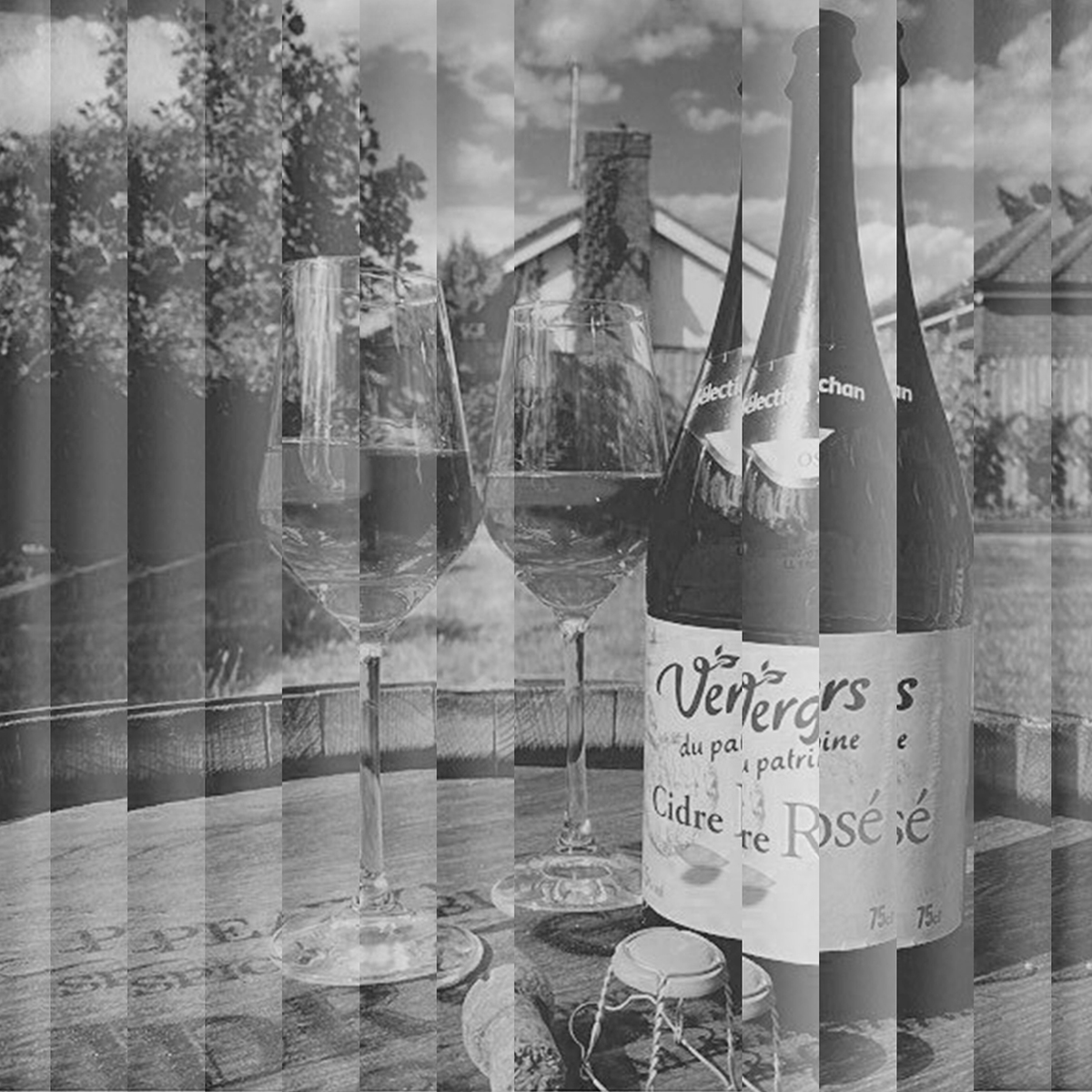
Leave a Reply